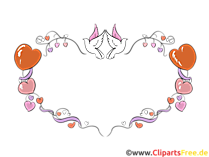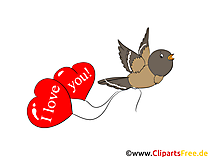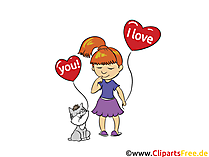Design Guide: The red thread in the photo book
Anyone who starts designing a photo calendar or photo book feels a bit like a painter, writer or composer at the beginning: he is faced with nothing - a blank canvas, a blank book page or a blank sheet of music. And the most important thing now is to find a common thread that can run as a connecting element through the entire photographic work.
 Which common thread this can be in the photo calendar and what is important when designing a photo book should be the subject of this design guide.
Which common thread this can be in the photo calendar and what is important when designing a photo book should be the subject of this design guide.
The creative red thread in the photo calendar
Creating a photo calendar is a little easier than creating a photo book, because the structure is largely predetermined - just by the calendar, which is an integral part of the photo calendar. Some providers offer design software as well as numerous templates. To an even more individual Cliparts With PhotographerBook, for example, you can choose from three types of paper: matt, structured or high-gloss. The latter is particularly suitable for photo calendars, according to the provider. An example: If it is to be a calendar about the new earth citizen, which has been lighting up the minds of parents, grandmas, grandpas and other relatives for a little over a year, then it can be a layout in the typical baby color - pink or blue. But other childish motifs, small drawings or colorful shapes also go very well with this theme. It is less advisable to rely on a rigid layout with rectangular shapes for such an emotional topic - this looks classic, but is not suitable for designing a baby book. Geometric shapes, however, can work very well in house building documentation. Ornaments, floral patterns or a suitable clip art are particularly popular with garden or wedding calendars.
Designing a photo book - that's what the creative minds should look for
 Of course, a photo book should be a very individual piece of work - but that's because of the photos alone, which are always personal and individual. That means: Nobody has to design each page in a different color or even give each picture a different frame, because that doesn't have a particularly good effect on the final work. Anyone who does not want to stick to any specifications or patterns at all costs is doing the overall work no favor, but is on the verge of creating a motley hodgepodge with this approach that will not be very attractive. However, if you take these tips into account, you will create a coherent overall work:
Of course, a photo book should be a very individual piece of work - but that's because of the photos alone, which are always personal and individual. That means: Nobody has to design each page in a different color or even give each picture a different frame, because that doesn't have a particularly good effect on the final work. Anyone who does not want to stick to any specifications or patterns at all costs is doing the overall work no favor, but is on the verge of creating a motley hodgepodge with this approach that will not be very attractive. However, if you take these tips into account, you will create a coherent overall work:
1. Font, font style, font size and font color
The font should be consistent throughout the work. Clear fonts that are also used in normal correspondence are particularly easy to read. If you want something particularly eye-catching, you can choose a font for the headline that deviates from the standard. The font style and size should also not be varied very often. It becomes particularly consistent if there is a font (in one font style and in one font size) for the main text and a font (or alternatively the main text font with a larger number of points) for the heading. The same applies to the colors: black is the color of the font. In the case of a dark background, or to put a caption directly on a picture, you can choose the font color white if the font size is not too small.

2. Colors, shapes and the central design element
Anyone thinking of an overall concept for the photo book work should first look out for a coherent sample. Preferred and coordinated colors, shapes and a few central design elements should be packed into it. With the reduction to a predetermined design set, the risk of creating a motley hodgepodge is minimized. As at the beginning there are many colors. The trick, however, is, as mentioned, to skillfully combine round, soft, flowing shapes and light, pastel-colored tones for the colors that match the theme. emotional issues. If it is more about documentation, the forms can be straighter. The design elements should be chosen with care.
 Funny cliparts are legitimate, but should also be reduced or used pointedly in order not to
Funny cliparts are legitimate, but should also be reduced or used pointedly in order not to
3. The arrangement of picture and text
An old layout rule means that the images on one side should be in relation to one another so that when connected they can form the largest possible triangle. This rule of thumb should be followed by those who, for example, design a wedding newspaper or a wedding magazine as a special form of a photo book. For a classic photo book, however, the tip is to bring image and text into harmony. Is the text a mandatory part of this? No! But sprinkled here and there it can positively favor the effect of the overall composition. Decide in advance whether you want to use all images with or without borders. Design tip: A manageable number of layout compositions should also be used when placing images. It is nice, for example, if the reader notices at first glance that a new chapter is beginning - because, for example, they always start with a picture that falls off the edge.
The composition of a photo book is not rocket science if it has been determined in advance which design should run through the book like the proverbial red thread. Tip: The providers also offer special software solutions for photo books that create the creative sample mentioned at the beginning and then leave the producer of the photo book only to arrange the individual parts.